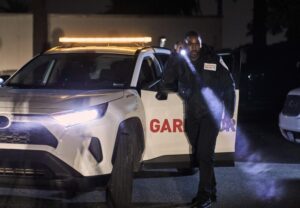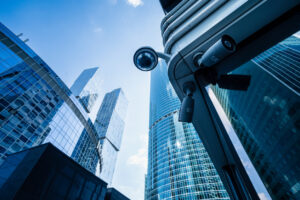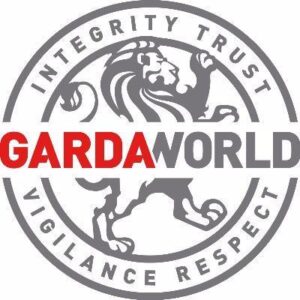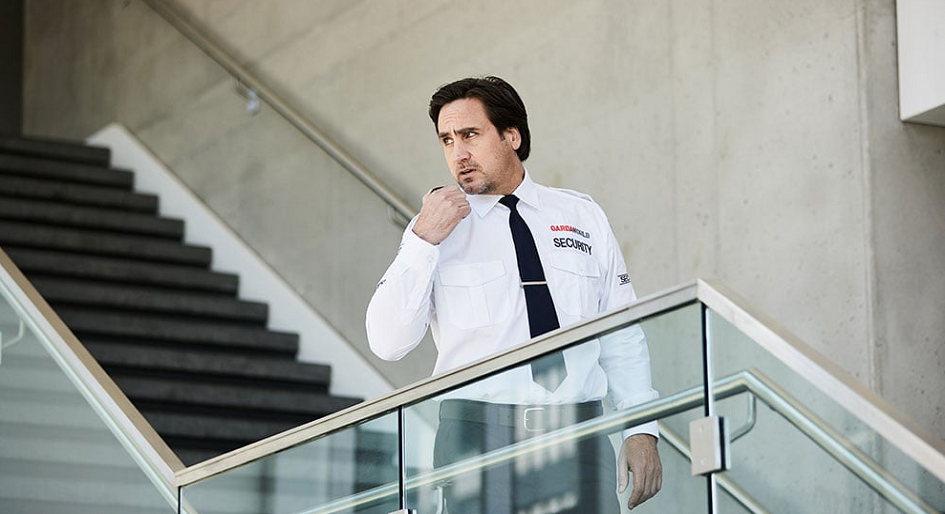The definition of commercial property security has evolved. Coming out of the pandemic, several factors have reshaped what it means to safeguard building occupants and the communities they share.
Scott Young has been among the security professionals watching this evolution unfold. As National Vice President of Security Systems and Technology with GardaWorld, he and his team have seen the role of the security professional adapt in response to emerging social challenges and technological advances.
 “Customer service has been one of the most important aspects when it comes to a proper security team, but since the pandemic, we’ve had to apply that same mindset to the community at large,” he says, noting, “It’s still vitally important that our security professionals serve as trusted ambassadors for their building and provide that high level of customer service to its tenants, but now we have to be more involved in what goes on outside our doors.”
“Customer service has been one of the most important aspects when it comes to a proper security team, but since the pandemic, we’ve had to apply that same mindset to the community at large,” he says, noting, “It’s still vitally important that our security professionals serve as trusted ambassadors for their building and provide that high level of customer service to its tenants, but now we have to be more involved in what goes on outside our doors.”
The shift is in response to an uptick in social disorder observed by security professionals throughout the sector. While moderating a panel in Calgary, Young recalls hearing several security managers from some of the largest buildings in the City’s downtown core report on a dramatic rise in instances of social disorder within their properties compared to just a few years ago.
“There was a unanimous agreement that the security posture has had to change somewhat from customer service for the tenants to customer service to the downtown vulnerable population,” he recalls.
 That rise in community unrest has heightened the need for security professionals who can demonstrate greater empathy for vulnerable community members, defuse potentially violent situations, and step in to help emergency responders when the need arises.
That rise in community unrest has heightened the need for security professionals who can demonstrate greater empathy for vulnerable community members, defuse potentially violent situations, and step in to help emergency responders when the need arises.
“These are real people who are either experiencing homelessness, mental health issues, or drug and addiction challenges and need support,” he says. “As security professionals, we need to be ready to help in some capacity. There can’t be an adversarial relationship with them because that doesn’t help anyone. We must be respect-driven and ready to assist when an incident occurs.”
A broader community mandate means security professionals must also collaborate more with teams from other buildings and community partners. And indeed, initiatives like Crime Stoppers and the Bolo program (“Be On the Lookout”), launched by the Stephan Crétier Foundation, are doing that by helping teams form coordinated responses to local threats and activity.
 “We’re seeing some fantastic initiatives happening in cities across the country where people are coming together to respond to the vulnerable population,” says Young, noting, “Calgary’s DOAP Team (Downtown Outreach Addictions Partnership), for example, are dedicated individuals who respond to challenging situations. They are vital to aiding the security guard force in properly responding in a very humane way to people in challenging situations.”
“We’re seeing some fantastic initiatives happening in cities across the country where people are coming together to respond to the vulnerable population,” says Young, noting, “Calgary’s DOAP Team (Downtown Outreach Addictions Partnership), for example, are dedicated individuals who respond to challenging situations. They are vital to aiding the security guard force in properly responding in a very humane way to people in challenging situations.”
“Our focus has evolved, but we’re not alone out there,” he adds.
Tech-driven trends
Other trends are taking shape within the commercial security sector. In an ongoing effort to protect building occupants and keep a constant eye on both building and community activities, properties are turning to a suite of modern surveillance technologies. These include “smart” motion sensors, cameras, and digital surveillance hubs that provide security teams with the capability to record, analyze, upload, and share security data (e.g., footage, alerts, communications, etc.) at all hours of the day.
 “There’s always going to be a need for human response, but today’s technologies are invaluable because they help us get the best information to the right teams as quickly as possible,” says Young.
“There’s always going to be a need for human response, but today’s technologies are invaluable because they help us get the best information to the right teams as quickly as possible,” says Young.
For its part, GardaWorld has been rolling out advanced, solar-powered mobile surveillance units across Canada. And beyond providing property stakeholders with greater real-time visibility and awareness, these technologies are helping to address labour challenges.
“Recruiting is a challenge in our industry, and labour costs are increasing,” says Young. “It’s very expensive to deploy a security guard 24/7, so we’re seeing a lot more interest around utilizing technology to provide a hybrid solution wherein technology can ensure guards in the operations centres are well informed and making the most effective use of their time.”
Embracing technology in the field of commercial property security is about more than augmenting workforces, Young adds. With smarter, more connected surveillance technologies comes greater real-time visibility and situational awareness for security professionals in public-facing environments.
“We don’t know what we don’t know,” says Young. “So the more technology can do to provide our people with up-to-the-moment insights and data about their building and community, the safer those security experts will be. And that’s an advantage for everyone.”
Keeping pace
The commercial security sector is never static. And as new trends unfold, there is value in both security professionals and their clients to stay on top of the issues and opportunities outside their doors.
“It’s in our collective best interest to pay attention to trends around community safety and collaboration,” adds Young. “That way, we can not only provide a safe and secure environment for building tenants and guests but support the communities they live in.”

GardaWorld is a global leader in providing integrated physical security, cash management and risk management solutions. Learn more at www.garda.com.









